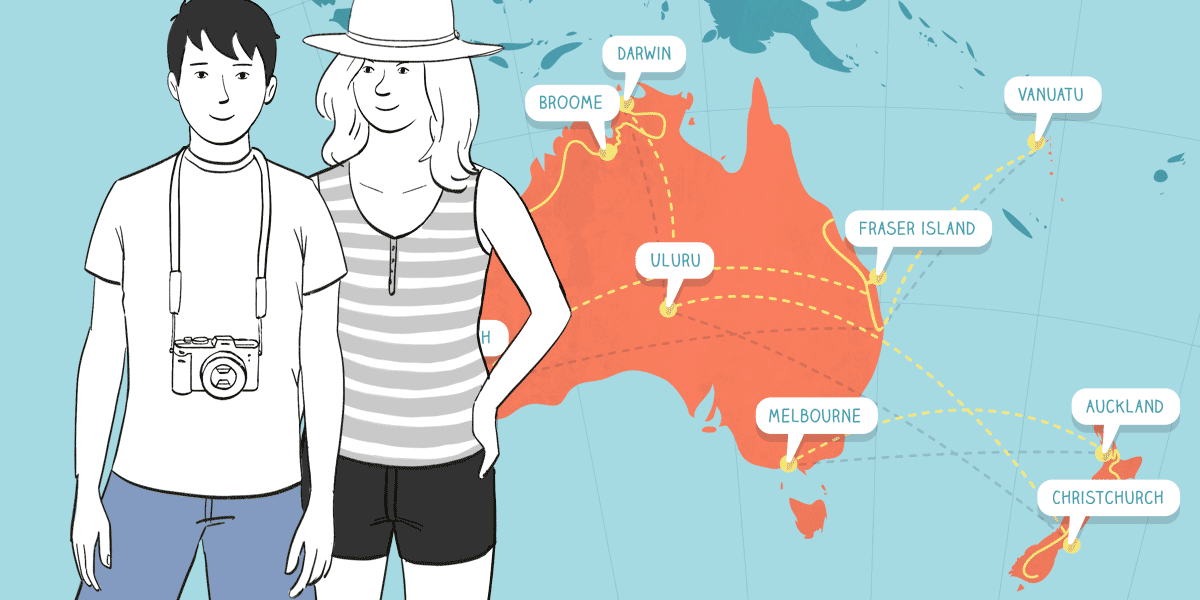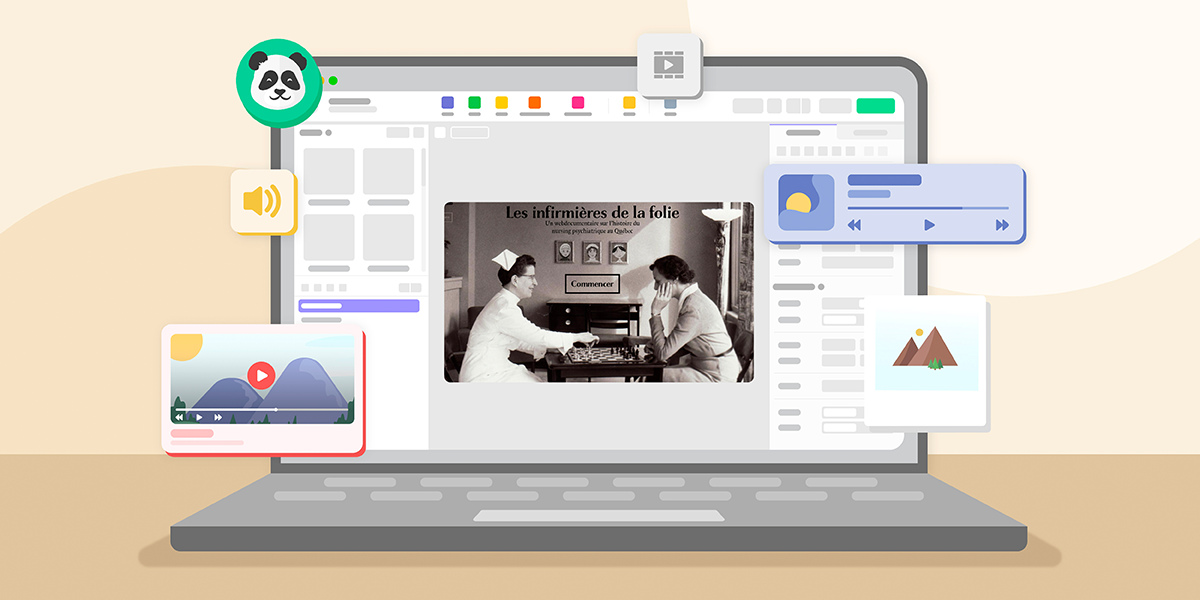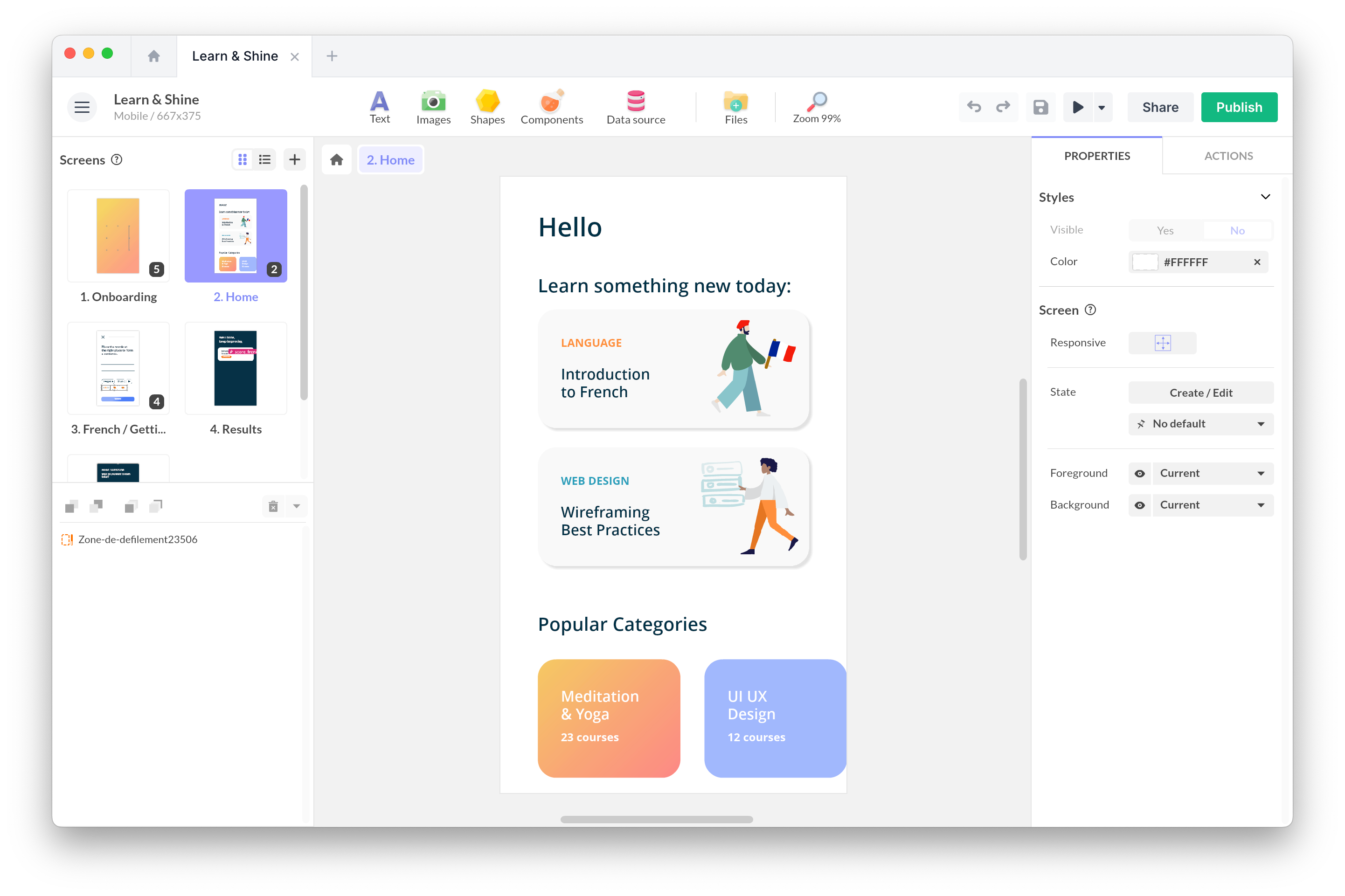Tue, Dec 6, 2022
Behind the Scenes of “Les Infirmières de la Folie” Interactive Documentary
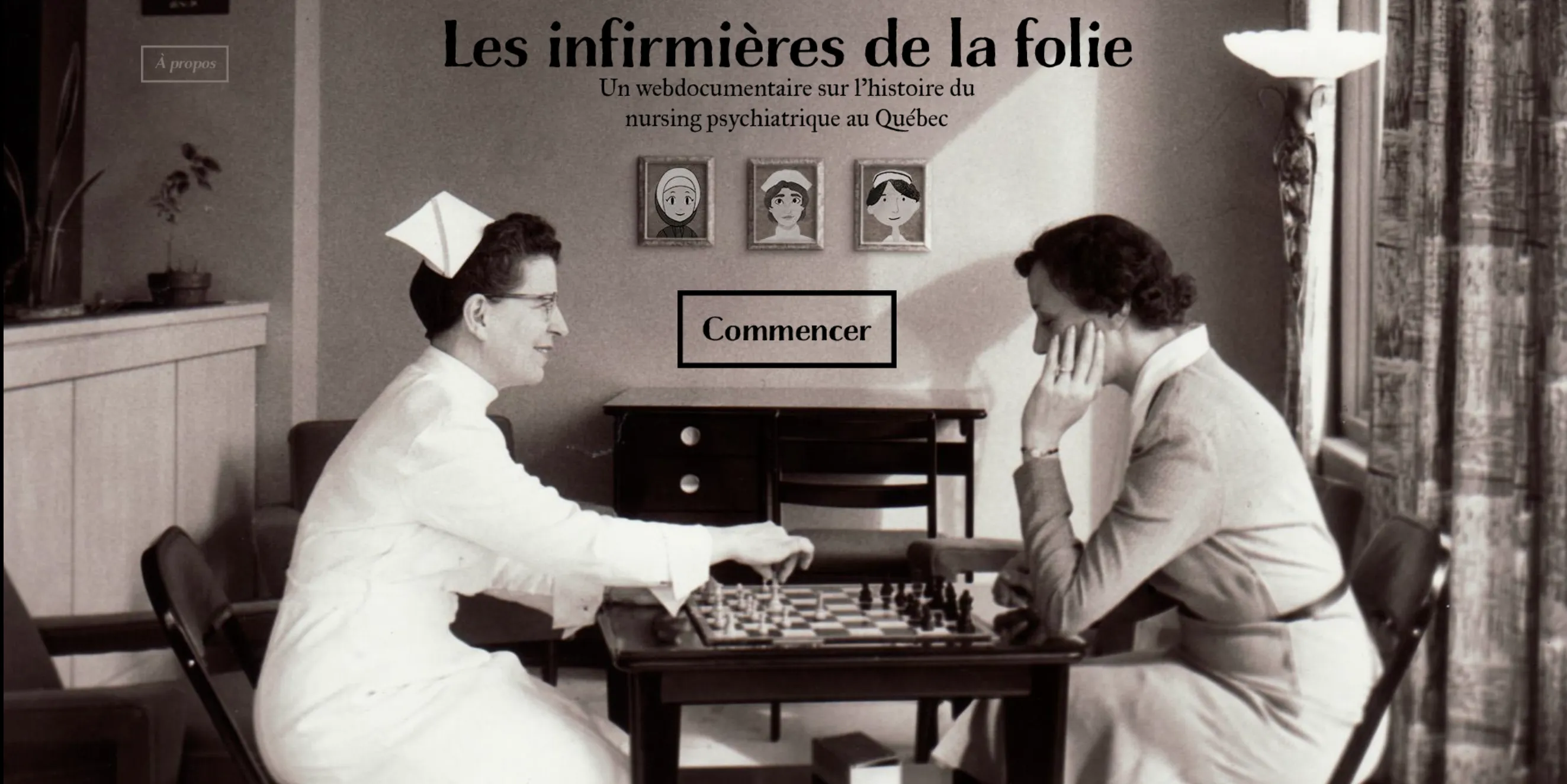
“Les infirmières de la folie” is the result of several years of research conducted by the University of Ottawa’s Nursing History Research Unit. It’s an interactive documentary in French about the history of psychiatric nursing in Quebec in the XXᵉ century through the stories of 3 nurses. The background of the project, the challenges around its production and the issues of this interactive format, especially for education: we discussed with Alexandre Klein and Martin Bonnard, in charge of this project 😊
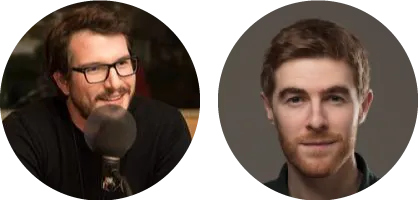
Alexandre Klein is a historian of science, auxiliary professor at the University of Ottawa and works on the history of health sciences, particularly mental health. He directed one of the research phases and coordinated all the teams around this project.
Martin Bonnard is a post-doctoral researcher at McGill University and a member of the Laboratoire de recherche sur les pratiques audiovisuelles documentaires (labdoc) of the Université du Québec à Montréal. He was in charge of the creation of the interface.
Together, they tell us more about this project they are working on since 2016.
An interactive multimedia storytelling to attract and explain
Why this interactive webdocumentary format? It is a format that they both know well and that somehow imposed itself on them for this project. “We wanted to tell several stories at the same time, without necessarily prioritizing them and by leaving the traditional mode of storytelling.”
As they target a young audience, students in nursing and history, the goal was to find an appealing format that would be adapted to their digital uses. “We wanted to provide them with quite short and engaging content, but to give them access to additional content. The web documentary format allows this through its multiple layers and tree structure.”
This innovative format has also seduced funders and allowed them to obtain funds for the research.
This web documentary tells the story of 3 nurses (Charlotte, Emela and Rachel) in a series of multimedia and playful sequences. We also discover institutions such as the Saint-Jean de Dieu Hospital, the largest asylum in Quebec, Dr. Prévost’s small sanatorium, which will become an avant-garde neuropsychiatric center, and the Saint-Michel-Archange Hospital.
Each character has her own animation movie of approximately 10 minutes. Two of these characters are fictional, brought to life by all the researches that we are conducted and the third one really existed. Beyond this first layer of content, it is more than 2 hours of historical content that the user has the opportunity to browse to learn more about the context.
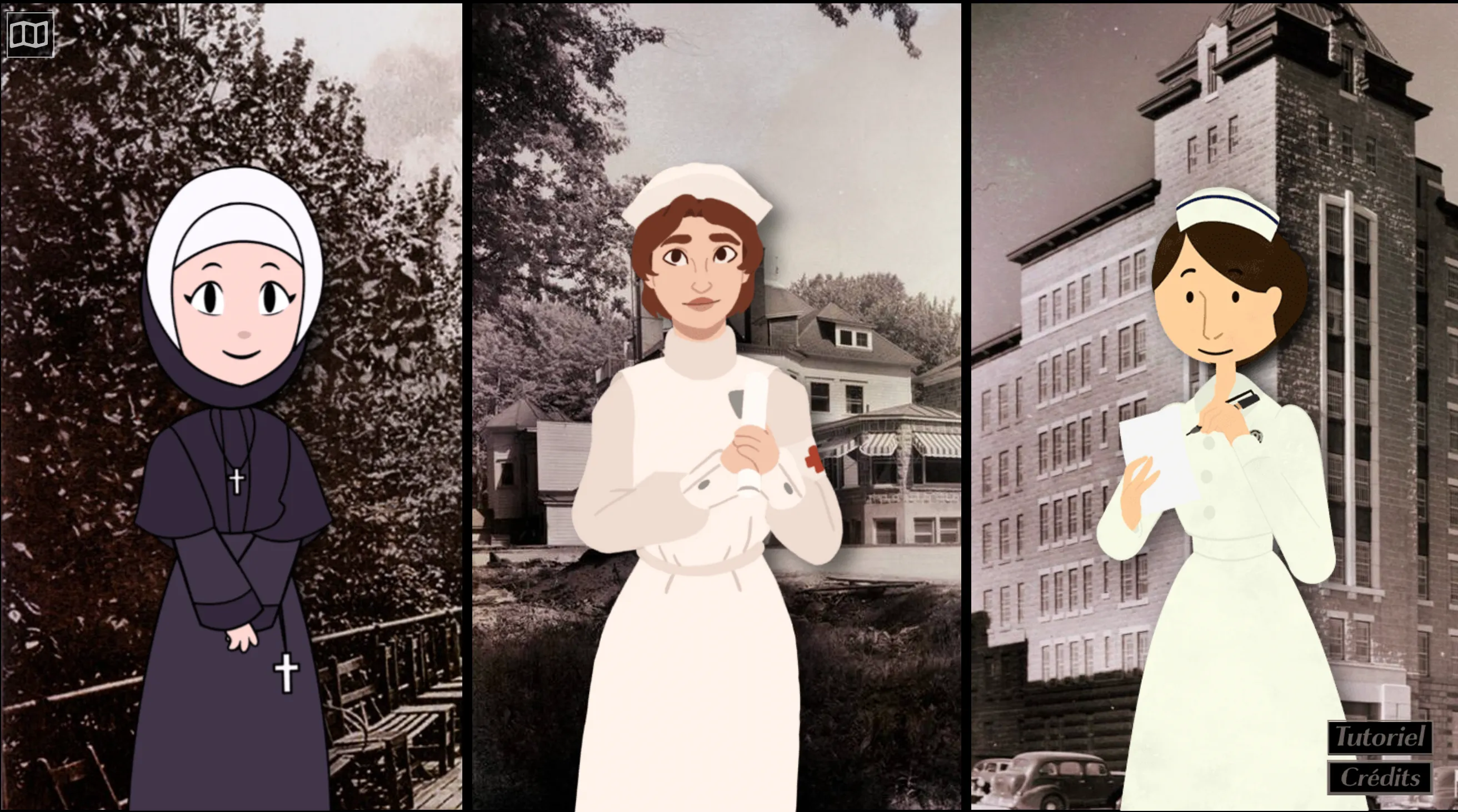
When choosing the technical solution, Martin had very specific requirements: the platform had to be reactive in order to “encourage constant interaction with the researchers ” and must allow for a kind of “do-it-yourself” approach so that their project could evolve as they discovered the tool.
They were familiar with Klynt and liked the affordability and easy setup of the solution. However, the tool had not been updated for a long time and they were concerned about this when the project was launched. They are aware that one of the challenges of the interactive storytelling is its obsolescence: “Some of the very beautiful projects cost hundreds of thousands of Canadian dollars and are no longer accessible today.” They want to make their project last in time.
Moreover, they perceive from the beginning of the project the challenge of having a graphic and interactive interface to show the importance of navigation [which allows access to other stories, institutions and additional content] instead of simply connecting the video sequences together.
They chose PandaSuite and adopted its design-oriented approach: “The advantage of PandaSuite is that the tool is integrated: there is both the graphical interface that allows you to quickly build the object and all the plugin management that Klynt doesn’t have [the tool has many, many components]. The support from the PandaSuite team was also great throughout the project.”
Le cloître et la prison, David Dufresne’s webdocs, Alma, Docubase (MIT’s database)… Alexandre and Martin have a solid culture of web documentaries and use these references to familiarize the rest of the team, showing them the possibilities and the limits of this format.
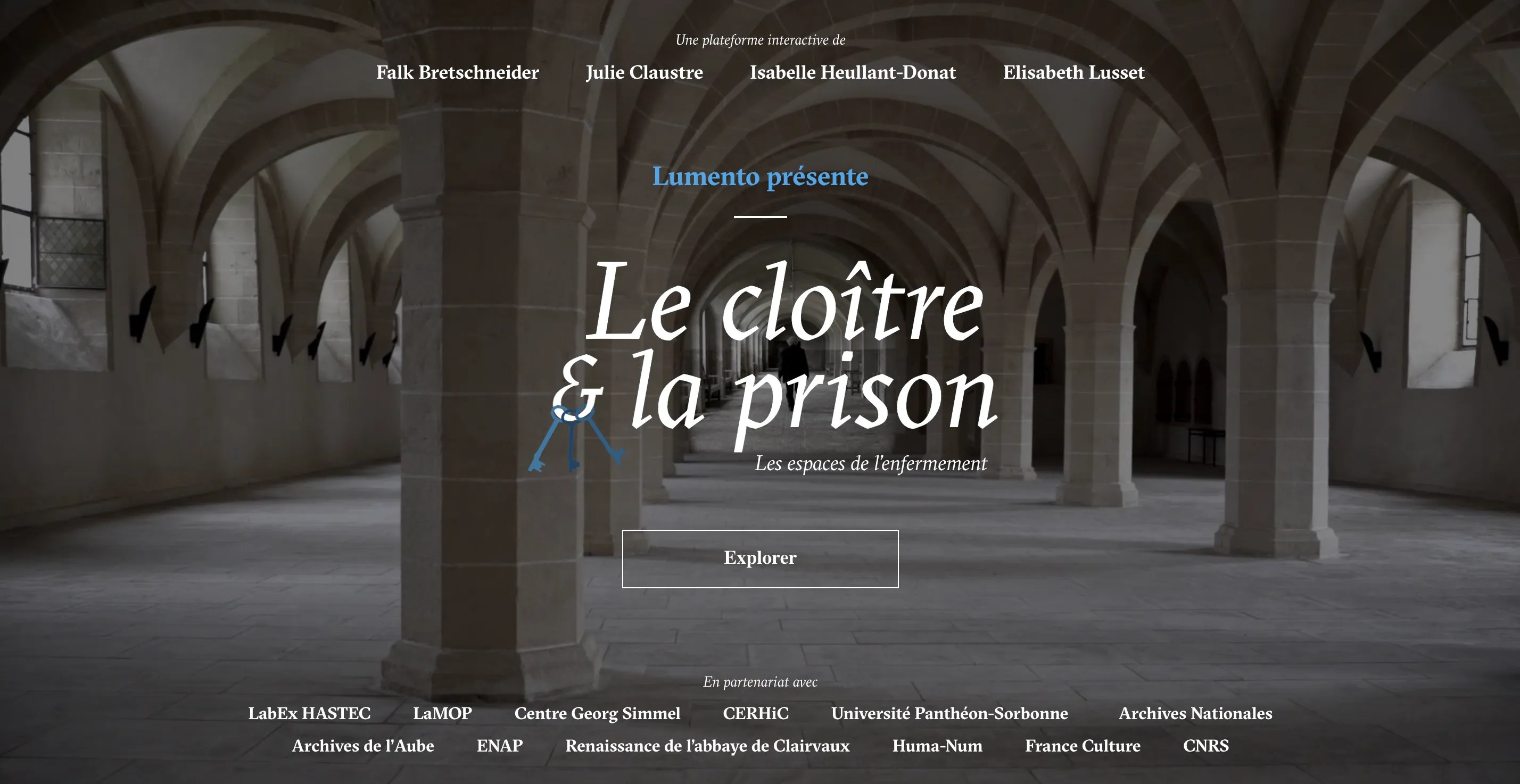
Are these inspirations for their project? Yes and no. They don’t set a framework and rely on their research work to define the structure, produce the media and build the final object. For Alexandre, “there is no such thing as a web documentary, there are only web documentaries and they are always linked to the project according to the place, according to the way we want to tell the story, and to whom we want to tell it”.
One of this project assets is these sequences in animated film. They are the result of a beautiful collaboration with Marie-Josée Saint Pierre, filmmaker and animation professor at Laval University. A group of Marie-Josée’s students is in charge of bringing the characters to life and incorporates this project into its pedagogical planning. Producing an animated film or a web documentary does not impose the same constraints, but everyone learns to work together and to coordinate their approaches. Actors and a musician also take part in the project for the voices and the sound environment.
The renewal of the web documentary
Alexandre and Martin see this project as an example of the renewal of the web documentary format.
Very popular in the early 2000s, when journalists faced the crisis of the traditional press, this format was abandoned because it was expensive and new formats emerged such as applications or websites.
But according to them, this format was not sufficiently exploited: “There were not so many people who invested in this subject and there were not so many projects quantitatively”. It was also not the right time for the audience: “It was also a bit early in the Internet, for people to be really touched by this format”.
Today, the environment is more appropriate, and particularly education web documentaries, because there is more and more interest in the promotion of research and the dissemination of knowledge. Both from researchers but also by funding organizations and university managers.
According to Alexandre and Martin, the web documentary is interesting for the universities as it allows more freedom in its design. You can build more complex things like this project, or very simple exhibitions (“a website where you click from a painting to another”) or as Radio Canada does, scrolling pages in which the information appears as you go along.
It remains that the production of a web documentary is more challenging than a podcast. Nevertheless the it remains the ideal tool to give access to visual contents: “We wanted a web documentary because we had things to show, especially a lot of archives. The archive is at the heart of this project.”
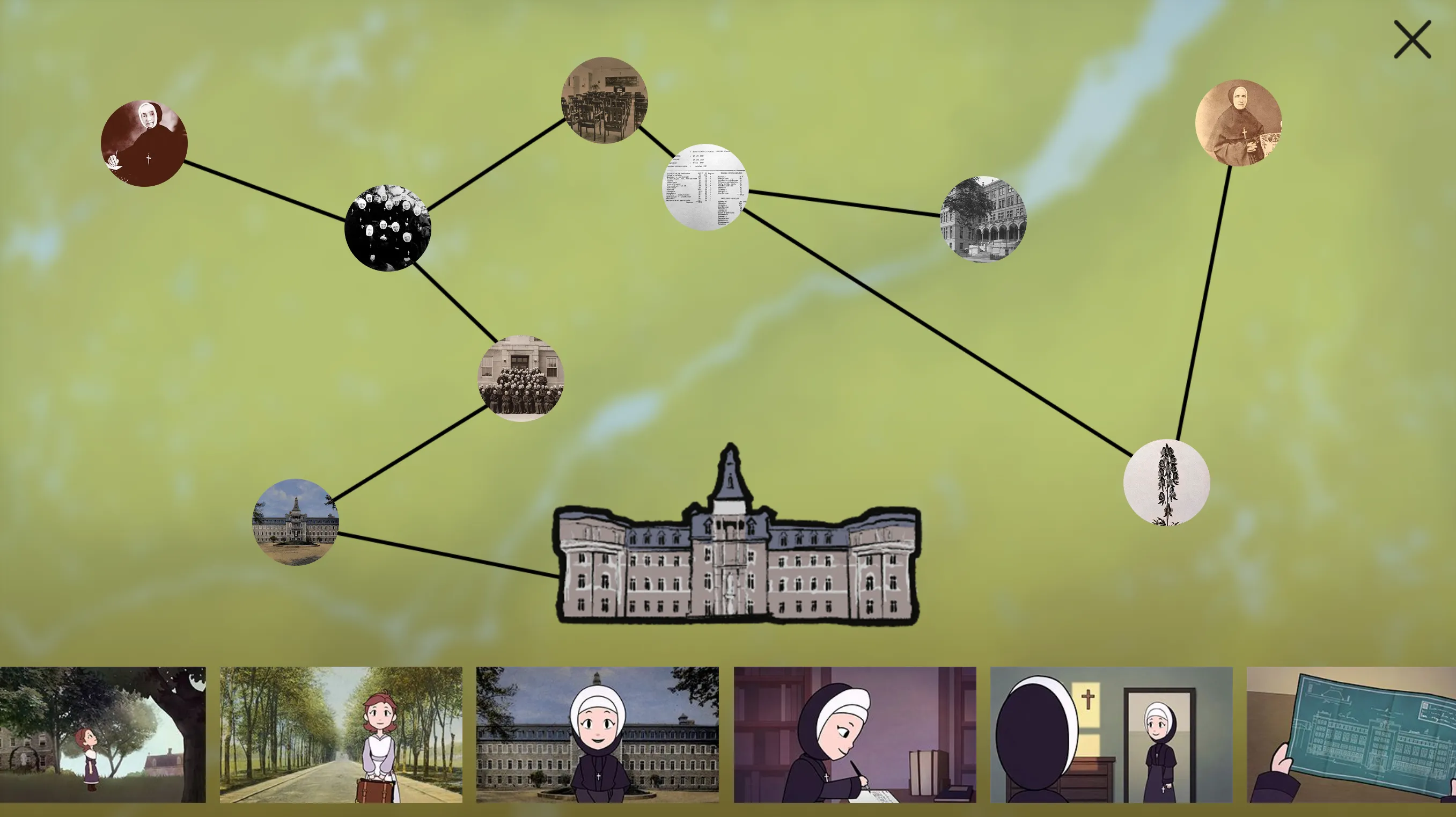
To go even further, Alexandre has a dream of a web documentary in which the user would have access to more layers of content: the result of the research at the first level, the context at the second, then the historiographical debates and finally, at the last level, the actual documents that led to these results.
They are aware of the opportunities available to them in North America thanks to the commitment of public authorities to digital technology and because of the proximity of competencies within the university (“a pool of competencies”).
”Promotion projects used to look awful because the priorities were not put on design or navigation. Why all of a sudden do projects look better? This is our chance in North America, within the university, the researchers are very close to the practitioners in audiovisual, interactive media… which makes it possible to go and find skills very quickly”.
For Martin, a turning point is taking place in the students’ skills. “Before, we trained in illustration, photography, web design. Now there are more and more integrated solutions such as Canva or PandaSuite, which emphasize the graphic side and not the programming. Students are going to get trained and this will allow more projects of this type to be launched.”
Starting this winter, the web doc will be used in U of O classes and in several nursing courses. A tour is planned in the different History and Nursing departments in Quebec to talk about the webdoc. It is available free of charge to those who want to learn more about this subject.
To discover this web documentary: https://www.lesinfirmieresdelafolie.ca/
To learn more about this project
If you want to know more about the webdoc “Les infirmières de la folie” here are the contacts of Martin, Alexandre and the whole team:
- Martin Bonnard: [email protected]
- Alexandre Klein: [email protected]
- The Nursing History Research Unit: [email protected]
To learn more about PandaSuite: https://pandasuite.com

